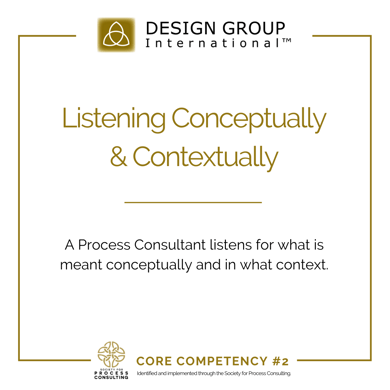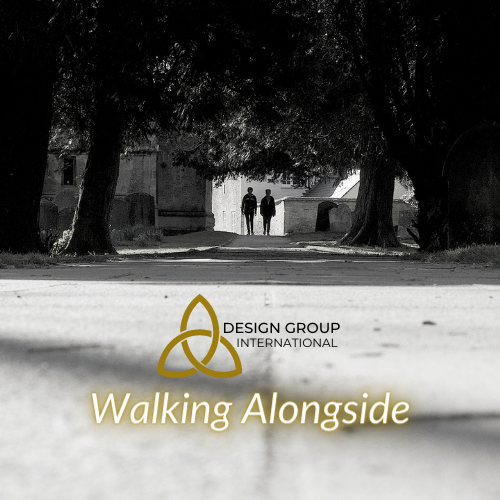Examining listening conceptually and contextually
My family texts back and forth most days. We know each other well and value frequent interactions showing our love through listening to each other’s victories, humor, challenges, and questions each day brings. As close as we are we miscommunicate by assigning different meanings to certain messages. At Thanksgiving, we were interested in reserving a community room on the beach. My mom oversaw the inquiry into the reservation. She texted to the family, “Tower lounge reserved…for thanksgiving…Resv 12-7.” How would you interpret the intended message? I, without hesitation, assumed we had been too slow on solidifying our plans and it meant we couldn’t get the room because it was already reserved. My son-in-law read it as, “Yaay, Nana got us in, and this will be fun!” This took about 10 minutes for me to correctly understand the message clarified and confirmed by the message sender. Our Thanksgiving plans are an everyday example of how easily we misinterpret words, situations, and the intended meanings from others’ communication.
The Society for Process Consulting describes the second core competency of listening as the need to listen “Conceptually and Contextually.” Process consultants are committed to look for words and situations where different meanings may be held between parties and explore understanding of what clients mean when using that term. Beyond certain phrases - what are cultural assumptions that undergird the presenting conversations? How can we listen underneath, across, and into the future to help clients take the next best move while continually testing for key understandings all along the way?

A recent client engaged my coaching services to help them identify their next career move. We engaged in value clarifications and strength assessments helping the client give voice to their true self. Our Agreement imagined we would next move to career assessments and align the client’s answers with their values and strengths. Instead, we have spent some significant time building personal change management skills. Why the addition of a topic not originally planned to work on together for the client’s success?
The desire for this client to know their future has been strong and clear as voiced by them. I soon realized and the client agreed that they held a hampering belief system. These beliefs were restraining their future options and needed to be addressed so they could be set free from a net of fear. Their conceptual perspective of how to determine their best-suited future work role was constrained by past fears which were paralyzing the client’s next moves. This inability to move sets a self-limiting pattern where- without intentional examination- the client connects any new venture as requiring change. And so, any plan is quickly rejected based on fear-inducing change. Their context from past experiences was that it was easier to be somewhat unfulfilled rather than to ante up and attempt change. And so, the verbal message to me a process consultant/coach from the client was, “I want to know what career best suits me in life,” but the contextual reality quickly became “I can’t commit to anything that pushes me to get out of my boxed-in comfort zone.”
The listening process includes decoding/interpretation where we as helpers in the process consulting role commit to understanding the client’s intended message. We guard against assuming literal meanings of client words or spoken intent. We realize that words have context and are spoken from patterns of belief (concepts). Renee Edwards (2011) describes that meaning is captured when we use both top-down and bottom-up listening processing. Edwards refers to top-down as meaning when we listen based on “…prior knowledge and expectations…” Similarly, we are listening conceptually when we take in information according to existing patterns of thinking/belief. Our past informs our filter of how we consider the current opportunities before us. If change was scary in the past and perhaps turned out poorly, then our limiting beliefs see any new venture or career path involving change as a non-starter based on one’s experience. Listening in such a top-down manner and bringing past experiences into consideration can be helpful. If I know I’ve experienced too many microaggressions in certain settings as a woman leader I do need to think twice before consenting to put myself in the same situation. Reflecting conceptually and in Edward’s words-in a top-down fashion- brings pause and consideration to the future results.
Edwards places top-down listening with the need to be coupled with bottom-up listening. Bottom-up listening brings contextual listening to the fore looking for the speaker’s behavioral expressions – tone of voice, body language, and status of relationship behind the communication parties. Is the client saying something without any evidence of belief? Is the client expressing warm and caring emotions alongside words and phrases that may sound snarky but come across as terms of endearment? What are the positive or negative emotions shared behind their words? This is decoding listening from the bottom-up and can be read in how a client unfolds their context.
And so, we need to listen both conceptually and contextually to our clients. The conceptual experience of what’s before our client is based on the experience they have had with who/what they are desiring to become. Is the top-down decoding involved in motivating their movement or causing fear to halt forward progress? Authentically curious and caring process consultants will keep us on alert for ever-evolving clarity of determining the context behind their spoken needs. Bottom-up listening to context will have us considering all the non-verbal body language messages to help us understand their meaning. We must marry conceptual understandings our clients have experienced to the contextual realities they bring to our conversations.
My client was able to identify what they do when they put their foot on the brakes even as they desire to embrace change wholly by depressing the accelerator (Kegan & Lahey, 2009). They have identified how their values couple with their strengths as motivators in life to reach their goals. They have a repetitive mantra they’ve created that when said often gives them courage. They have a constant supportive listening presence and coach (me) in their self-work and now celebrate marked changes they’ve embraced and succeeded in over the last few months. Now and only now can we move on towards exploring how career choices align with this client’s newfound ability to embrace change.
Listening conceptually and contextually gives the process consultant the ability to know when to clarify, adapt original plans with the client’s consent, and work towards marrying both the top-down and bottoms-up decoding opportunities to listen to best understand how to be helpful.
Like me back in November, read your text messages again and don’t assume you didn’t get the room reservation. Ask questions, don’t go negative, realize your definitions are not other people’s definitions, your background and their experience of life vary and therefore bring different foundations to their words and intended meanings. Communication is a life’s work and listening conceptually and contextually is key for decoding any successful exchange of meaning.
/Dawn%20Yoder%20Graber%20Headshot%20(300x300).png?width=86&height=86&name=Dawn%20Yoder%20Graber%20Headshot%20(300x300).png) Dawn Yoder-Graber
Dawn Yoder-Graber
Design Group International
Senior Consultant
The core competencies of process consulting have been developed and are taught by the Society for Process Consulting. If you are interested in receiving your credential in process consulting please visit our website.

February 8, 2023

Comments